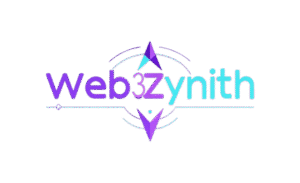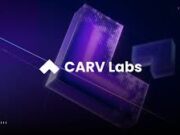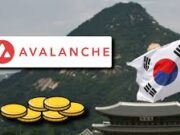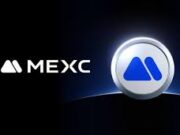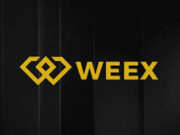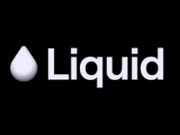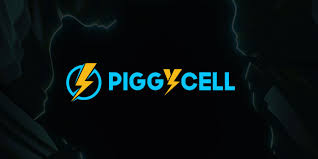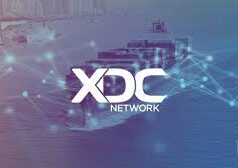October 2025 ushers in crisp air, turning leaves—and renewed buzz around crypto projects that actually bridge hype and hardware. If you, like me, are constantly scouting for DePIN plays grounded in real-world utility (not just another moonshot promise), then Piggycell just caught my eye like a power bank in a dead-zone hike.
As Korea’s undisputed king of shared charging stations, Piggycell isn’t content with dominating 95 % of its home market. Rather, it’s flipping the script: combining blockchain, securing a fresh ~$10–11 million raise, and gearing up for a Q4 token launch. With over 14,000 stations, 100,000+ batteries, and 4 million+ users already onboard, this isn’t vaporware — it’s scale meeting utility.
Below, I unpack its story, dissect the tech, and explain why your next coffee charge might just earn you crypto.
From Seoul Streets to Web3 Streets: Piggycell’s Korean Conquest
Back in 2019, founder John Lee and his team identified a pain point in hyper-connected Korea: smartphones are lifelines, but batteries die at the worst times. Piggycell launched as a seamless app to rent power banks from hubs in cafes, subways, and more. Fast-forward six years, and the metrics speak volumes:
- ~95 % market share in Korea (over 13,000 – 14,000 hubs deployed) (BlockBeats)
- 100,000+ devices in circulation (Binance)
- 4 million+ paying users (BlockBeats)
- Over 80 million+ rentals (aggregate)
In 2024 alone, they pulled in ~$20 million in revenue while maintaining profitability — unlike competitors still stuck in Web2 mode.
What drives adoption? A frictionless user experience: scan a QR code, borrow a bank, charge, then return anywhere. No subscriptions, just pay-per-use (~1,000–2,000 KRW per session). Strategic placement in high-traffic spots such as 7-Eleven and Starbucks further anchors convenience.
However, as strong as the business is, the centralized model carries limits: data locked behind closed servers, profits retained at the top, and little reward for users beyond convenience. That’s where blockchain enters.
A Pivot to DePIN + RWA: Tokenizing Real-World Power
Piggycell’s shift toward DePIN (Decentralized Physical Infrastructure Networks) and RWA (Real-World Asset tokenization) isn’t hype — it’s structural evolution. Each rental activity can now be logged on-chain, and revenues become tokenized for shared benefit.
As Piggycell states: “We’re not disrupting; we’re democratizing.” (BlockBeats)
In fact, in a recent public beta, the platform generated over 9.4 million on-chain records in just two weeks, validating its scalability and blockchain throughput under real usage. (followin.io)
Importantly, the project isn’t starting from scratch. It’s layering blockchain onto a validated, profitable business — not reinventing the wheel.
Fueling the Fire: $10–11M Raise and Blue-Chip Backers
In early 2025, Piggycell closed a seed round of $10–11 million USD, drawing in both traditional Korean heavyweights and top-tier Web3 investors. (BlockBeats)
Notable backers include Shinhan Financial Group, Hana Financial Group, Animoca Brands, DWF Labs, and others. (BlockBeats)
The funds will be deployed toward global expansion, infrastructure scaling, and ecosystem incentives. In fact, Piggycell is partnering with ICP HUBS — integrating with 26 global nodes to accelerate DePIN scaling. (CryptoRank)
On the ground in Korea, they inked deals with Ediya Coffee (3,000+ locations) and Yanolja (a travel-booking giant) to embed charging hubs in everyday spaces. (CryptoRank)
Closed beta activity spiked: over 800,000+ daily transactions (audits by CertiK pending) and deepening community traction (46K Telegram, 54K X followers). (BlockBeats)
“This is DePIN done right — real revenue, real users.” — as quoted in online discussions
Turning Power into Profit: Piggycell’s Token-Enabled Models
At its core, Piggycell fuses IoT-enabled chargers as nodes with blockchain as the control layer. Here’s how it monetizes:
1. Charge-to-Earn
Users rent a power bank, charge, and return — earning PGW (Piggy Watts) points that map to $PIGGY tokens. The more you use, the more you earn.
2. Dominate-to-Earn (aka Occupy-to-Earn)
Infrastructure is tokenized via NFTs tied to hub clusters. Hold an NFT for a region, and you share in real operational revenue (e.g. 5–10 % APY).
3. Play-to-Earn / Gamification
Mini-games, charging challenges, virtual races — users can boost rewards beyond passive usage.
4. Referral-to-Earn + Daily Check-in
Bring friends, log in daily — simple incentives to deepen retention.
Underpinning all of this is a “digital twin” model, where physical hubs map to on-chain entities. Revenue sharing is automated via smart contracts. Partners like RWA Inc. pool station earnings regionally, distributing via token logic. Meanwhile, IoTeX’s DePINscan ensures secure fleet management. All of it works toward a future where users don’t just rent — they own. (Binance)
In essence: charging becomes staking.
The Global Grid: Beyond Korea, One Plug at a Time
With Korea largely saturated, Piggycell’s sights are set overseas — especially Southeast Asia and beyond, where battery demand is high and infrastructure is sparse. Q2/Q3 2025 tests in cafes have already begun. (CryptoRank)
ICP HUBS support helps localize dev efforts across 26 nodes, reducing friction for new markets. (CryptoRank)
Strategic tie-ins matter. Yanolja helps deploy hubs in hotels and Airbnbs; Ediya brings them into daily coffee runs. Even whispers in Africa (Kenya pilot talks) point to ambitious global ambitions. (CryptoRank)
Risks remain: regulatory environments differ, battery logistics get complex, and token volatility looms. But Piggycell’s strategy — start lean, partner heavily, scale selectively — helps mitigate those risks.
Across the DePIN universe, the market for tokenized physical infrastructure is projected to reach trillions — and Piggycell wants a slice.
Galxe Glow-Up & Token Generation Event (TGE)
October 2025 marks the canonical TGE: $PIGGY token, PGW utility, and global access. (BlockBeats)
Ahead of that, they’re running Galxe campaigns — easy tasks like following on X, joining Telegram, or tweeting charging stories to earn early PGW rewards. These breath new energy (and users) into the community. One user tweeted:
“Last chance pre-TGE — social tasks for Watts? Easy entry to DePIN.”
Galxe’s reputation (having backed many successful launches) adds legitimacy; the design aims to funnel early loyalty without huge VC dumps. With 80K+ daily txns already, a successful TGE could spark explosive liquidity — especially on Korean exchanges.
Hurdles, Hype & the Human Touch
Of course, obstacles remain. Can average users, even grandparents, wrap their heads around NFT ownership? Piggycell’s app-first design helps, but education is key. Token price swings might rattle confidence — though tying $PIGGY to real revenue offers stabilization.
Competition lurks (e.g. Helium’s wireless DePIN), but Piggycell’s niche—mobile charging—is under-tapped. Moreover, it’s not just utility but community: users are stakeholders, not passive consumers.
In a world of dead batteries and digital fatigue, Piggycell reimagines charging as an economic act. As one community post put it:
“From plug to profit — Web3 wins.”
Watt’s Next: A Charged Horizon
- October 2025: TGE as liftoff
- 2026: Full rollout of global hubs, expanded Earn models, perhaps even EV/vehicle-charging integrations
- Longer term: power grids, IoT devices, energy markets
With a working business, $10–11 M in fuel, and token mechanics baked in, Piggycell’s more than scaling — it’s electrifying Web3 infrastructure.
Me, I’m eyeing that Seoul Region NFT. If you’re in Web3 for real-world impact, Piggycell isn’t just a bet — it’s a benchmark.
What’s your verdict — game changer or niche play? Drop a thought below and plug in.
Sources:
- “How South Korea’s leading power bank sharing service is building a fully inclusive Real-World Asset (RWA)” — TheBlockBeats (BlockBeats)
- Bitget News on Piggycell’s financial validation and RWA integration (Bitget)
- Binance research “In-Depth Research Report on the Piggycell Project” (Binance)
- Piggycell integration with ICP HUBS and expansion news (Cryptorank) (CryptoRank)
- Public beta on-chain record data from Followin / BlockBeats (followin.io)
- Piggycell’s market dominance and RWA narrative (BlockBeats / BlockBeats English) (m.theblockbeats.info)
